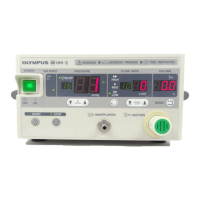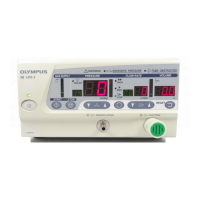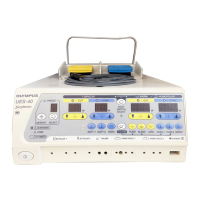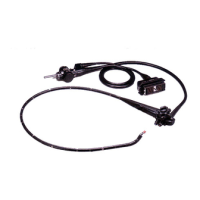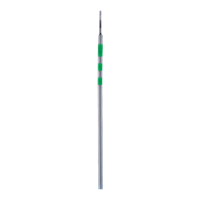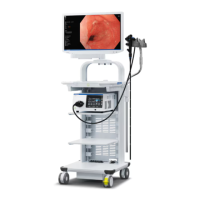Chapter 5 Operation
75
HIGH FLOW INSUFFLATION UNIT UHI-4
• Before use and after replacement of a CO
2
cylinder, allow at
least 2 L of CO
2
to flow through the insufflation tube. This
expels air from the system and ensures that only CO
2
is
insufflated.
• Monitor the condition of the patient carefully, and make
provisions for unexpected situations.
• During use of this instrument, make sure that blood and body
fluid do not penetrate inside the insufflation tube to prevent
contamination of the high-flow insufflation unit.
• Install this instrument at a higher altitude than the patient.
Otherwise, the blood and body fluid of the patient may
contaminate the high-flow insufflation unit through the
insufflation tube.
• Be careful not to immerse the tips of the trocar and veress
needle in the pool of blood and body fluid in the abdominal
cavity. Otherwise, the blood and body fluid may penetrate
into the insufflation tube.
• Should blood, etc. back flow into the insufflation tube, make
sure that it does not enter the UHI-4. Should any body fluids
enter the UHI-4, immediately terminate its use and contact
Olympus.
• When a filter is used with the device, backward flow of body
fluids (e.g., blood) may clog the filter. If body fluids flow
backward, stop insufflation immediately and replace the filter
with a new one.
• Even when the automatic suction or relief function is
activated, it may be impossible to release the excessive
pressure if the amount of gas flowing from other equipment
such as the laser unit is larger than the capacity of the
connected suction unit/facilities. In this case, reduce the
amount of gas flow from other equipment or take a measure
such as full opening of the faucet and valves of the trocar.
The suction function cannot be activated with this instrument
alone. It is required to connect the suction unit/facilities using
a suction tube.
• In the “NORMAL” cavity mode, do not use the smoke
evacuation function with a small person. Otherwise, the
cavity pressure may become unable to be maintained.

